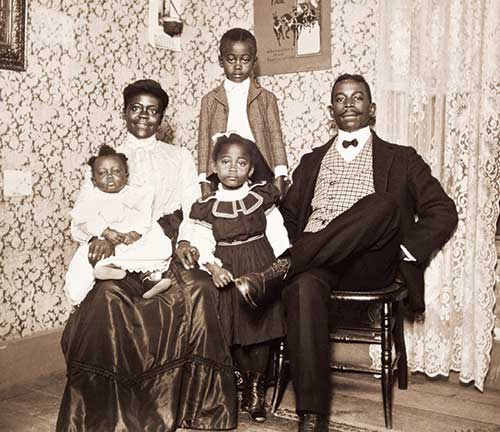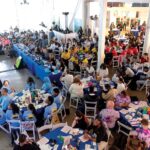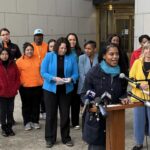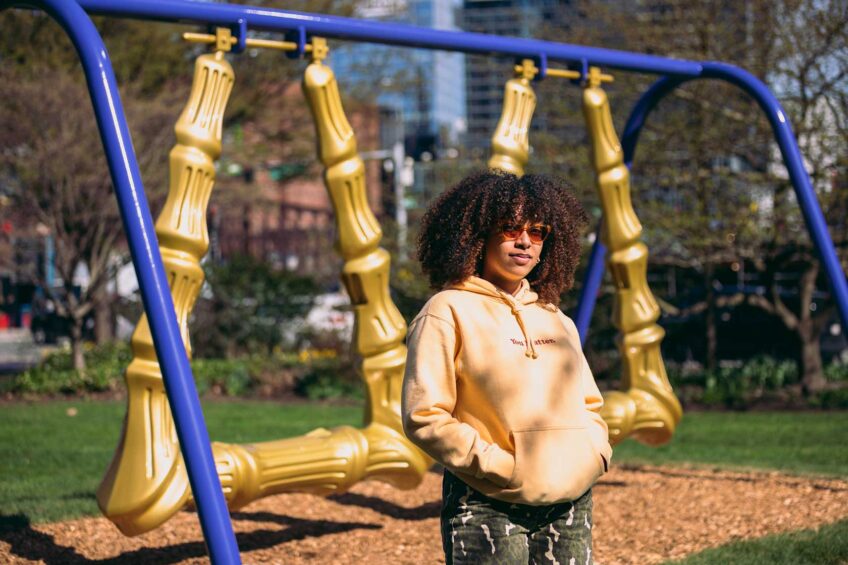A record survives
Photographs reveal Worcester’s historic African American community

Union victory in the Civil War liberated African Americans from slavery, but soon after, Ku Klux Klan violence and Jim Crow laws imposed new shackles on them. As the war ended, Worcester, Massachusetts was a welcoming city to former slaves seeking jobs and better lives. Although economic opportunities didn’t last — an influx of European workers got the good factory jobs, keeping most people of color in service occupations — migrants from the South built strong and lively neighborhoods in Worcester, including the ethnically diverse community of Beaver Brook.
On the web
Worcester Art Museum: www.worcesterart.org
“Rediscovering an American Community of Color” — accompanying website hosted by Clark University: www.bullardphotos.org
William Bullard (1876-1918), a white Yankee resident of Beaver Brook, took portraits of his neighbors over 20 years, from 1897 to 1917, amassing more than 5,400 gelatin silver dry plate negatives. Although he had no studio or professional affiliations, he rendered his subjects with great skill and painstakingly etched tiny numbers on the negatives that matched entries in his ledger, noting the names and locations of his subjects. Portraying working-class people of color with the skill and dignity reserved at that time for wealthy clients, his portraits show his subjects in their homes, on their porches, at work and at leisure. In his portraits, they are at ease and in charge.
Most homes in Beaver Brook are gone, razed in the 1950s by industrialists who bought properties and then abandoned them as empty lots. Thanks to Bullard, a record survives of people of color claiming their rightful place in society.

Author: William Bullard/courtesy Frank J. Morrill“Ralph Mendis on a Stoop,” photographed by William Bullard about 1902; printed 2016, archival inkjet print on Epson Hot Press Natural paper; facsimile produced from glass plate negatives lent by Frank J. Morrill.
“Rediscovering an American Community of Color: The Photographs of William Bullard, 1897–1917,” an exhibition on view through Feb. 25 at the Worcester Art Museum, presents 83 of Bullard’s portraits. Rendered under the museum’s supervision as archival inkjet prints in 2016 by John Marcy of 21st Editions, South Dennis, Massachusetts, Bullard’s portraits tell stories of individual and family histories, a community, a city and a nation built from migrants who move great distances to create new and better lives.
Co-curated by Nancy Kathryn Burns, the museum’s associate curator of prints, drawings and photographs, and Janette Thomas Greenwood, professor of history at Clark University, the exhibition is accompanied by a website hosted by Clark University (www.bullardphotos.org) and a fine catalog that includes essays by Burns, Greenwood and Frank J. Morrill, owner of the negatives, along with high-quality reproductions of the 83 photographs.
Nearly lost
The exhibition almost didn’t happen. After Bullard’s death in 1918, his brother stored the glass negatives and ledger for 40 years and eventually sold them to his postman. In 2003, Frank J. Morrill, a collector, purchased the materials from the postman’s grandson. A decade later, he and his granddaughter, Hannah, then age 10, explored the negatives to create a pictorial history of Worcester. Among Bullard’s streetscapes, Hannah found a portrait and noticed its tiny number. Morrill saw that it corresponded with an entry in Bullard’s logbook, and discovered similar entries for 230 portraits of people of color among Bullard’s negatives.
A retired history teacher, Morrill brought the collection to the attention of Greenwood, author of a 2009 study of the same population, “First Fruits of Freedom: The Migration of Former Slaves and Their Search for Equality in Worcester, Massachusetts, 1862-1900.” Their meeting set in motion a collaboration between the art museum and the university that led to the exhibition.
Greenwood’s students took part in genealogical research, studying public records and interviewing relatives to gather biographical information on the subjects and their heirs. Envisioning the exhibition as a community-building experience, the museum and Clark formed an advisory board of past and current residents. The day before the Oct. 14 opening, community advisors and portrait subjects’ descendants from far and near attended a celebration. At the opening, descendants of David T. Oswell, a prominent musician, composer and teacher photographed with his viola by Bullard in 1900, performed Oswell’s music.
The exhibition occupies a central hall and adjoining galleries. By the entrance is a map of the Beaver Brook neighborhood (circa 1911), a lopsided square mile or so that today retains a small park and the still-active John Street Baptist Church. Among its few remaining houses is Bullard’s former home at 5 Maple Tree Lane (formerly Mayfield Street).
An intimate atmosphere prevails in the galleries, where the prints are framed in gilded wood and displayed on deep magenta walls in uncluttered, thematic groupings. A table and chairs invite visitors to browse the catalog and related texts, including the iconic 1903 book, “The Souls of Black Folk,” a collection of essays by W. E. B. Du Bois (1868-1963), a leader of the Harlem Renaissance, who advocated photography as a tool to promote his era’s emerging black middle class. He presented a set of photographic portraits showing elite African-Americans at the Paris Exposition in 1900, but the subjects were mainly nameless except for a few individuals of great renown.
Bullard names his subjects, and, counter to studio practices of his time, which sought to lighten black skin, he skillfully adjusts his lighting and settings to render his subjects’ natural skin tones. Producing glass negatives ranging in size from 3 ¼-by-3 ¼ inches to 8-by-10 inches, Bullard worked with a bellows camera constructed of wood and leather that took minutes to complete exposures. The process required the collaboration of sitters, who had to remain still. Unlike studio photographers, who favored formal poses with props and a then-fashionable Pictorialist style, Bullard portrayed his subjects at work, at leisure and at home.
Bullard lacked a studio and perhaps was self-taught, but he had a knack for rendering character and personality, a keen eye for telling details and composition, and a warm rapport with his subjects. His portrait sitters appear confident and well dressed, whether in leisure finery, military uniforms or work attire.
Family and community ties
Most African American residents of Beaver Brook came from northern and eastern Virginia, New Bern in North Carolina and Camden in South Carolina, where during the Civil War they came to know white soldiers, ministers and teachers from Worcester who opposed slavery. After the war, these white northerners helped the newly emancipated slaves migrate to Worcester. The newcomers then helped their relatives join them in Beaver Brook.
Southern ties remained strong among the transplanted families. Edward Perkins, from Camden, and his wife Celia, both former slaves, arrived in 1879. Bullard took 36 photos of their extended family. A 1901 portrait shows Martha (Patsy) Perkins in a stylish white lace dress with matching “picture hat,” and another portrays her brother Ike in a top hat. When the siblings died, their family buried them back in Camden. Bullard’s “Edward Perkins in His Garden” (about 1902) shows Perkins posing in his thriving garden of collard greens.
Quoted in nearby wall text, contemporary descendant Kim Perkins Hampton says, “Seeing the photographs of my ancestors was like looking into a mirror for the first time. Because of this country’s bloodied past relationship with people of color, more specifically black people, it’s extremely rare for African Americans today to trace back their ancestry — let alone have the privilege to see them.”
“Rose Perkins Posing with Bicycle” (1900) shows the young laundress in up-to-the-minute cycling attire, including a smart cap, a culotte-style “divided skirt,” and a bouffant-sleeved blouse.
Cycling was a nationwide craze, and Worcester was an epicenter, with a dozen bicycle manufacturers and a host of cycling clubs including the black Albion Cycling Club. Marshall Walter “Major” Taylor (1878-1932), who broke racial barriers and won the 1899 world championship in cycling, relocated to Worcester and was a devoted member of the John Street Baptist Church.
Bullard’s portrayals of subjects in work settings include “Portrait of Eugene Shepard, Sr., Seated in a Railcar” (about 1905), which frames the uniformed railcar cleaner with a long angular view of the entire railcar, its row of ornate ceiling lights, horizontal chair backs and vertical windows converging on Shepard, who gazes at the viewer with a proprietor’s pride.
Ill and bereft after the death of his mother, William Bullard committed suicide at age 42.
Little known outside of his community and family, Bullard left a powerful legacy shared with the world in this exhibition. Bullard’s photographs tell a story of individuals and families that is also the nation’s story — of a people moving from slavery to freedom and full citizenship. Their stories might have been lost. Countering the eradication of family and individual historical records imposed by slavery, Bullard’s portraits keep these histories alive.






